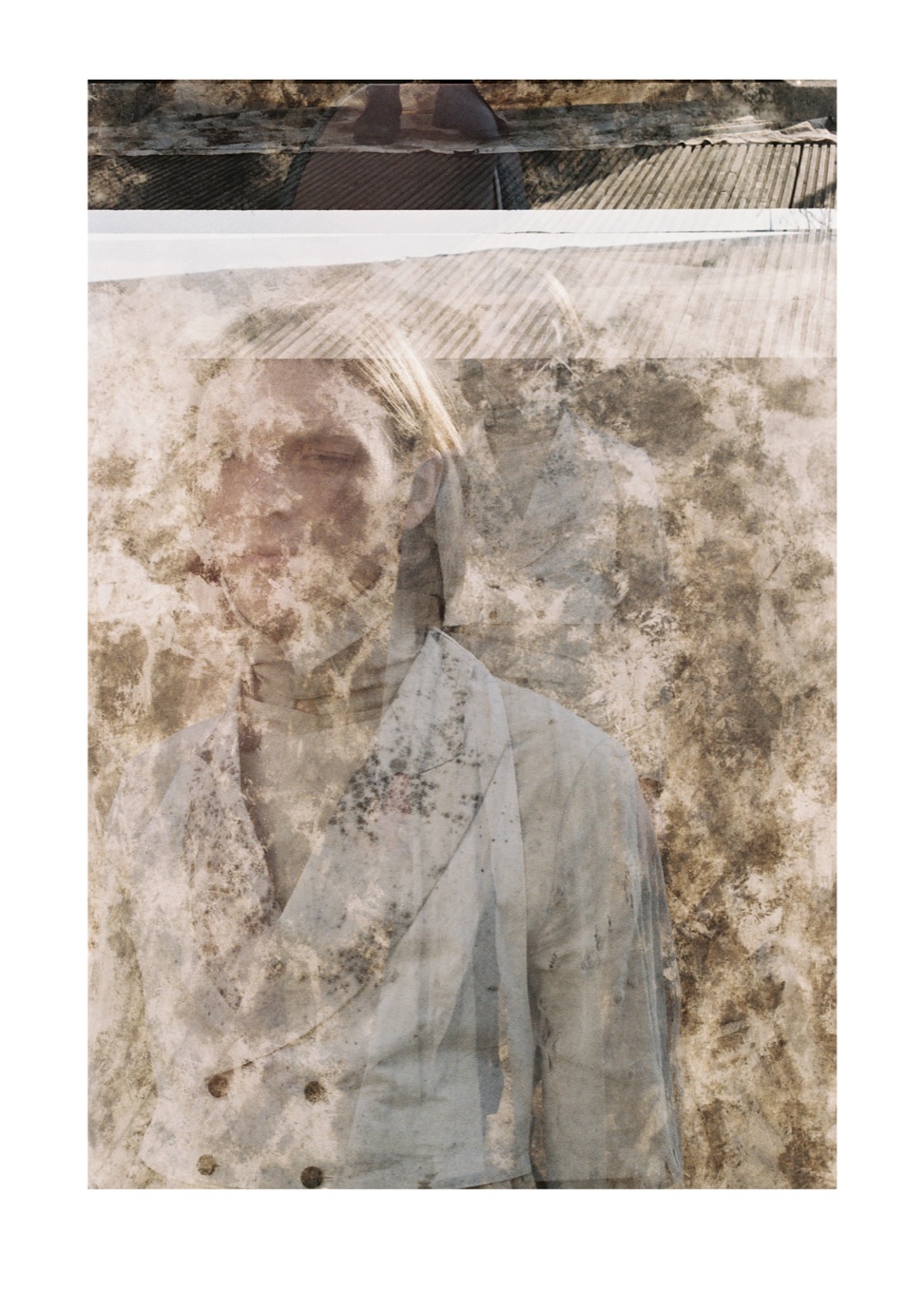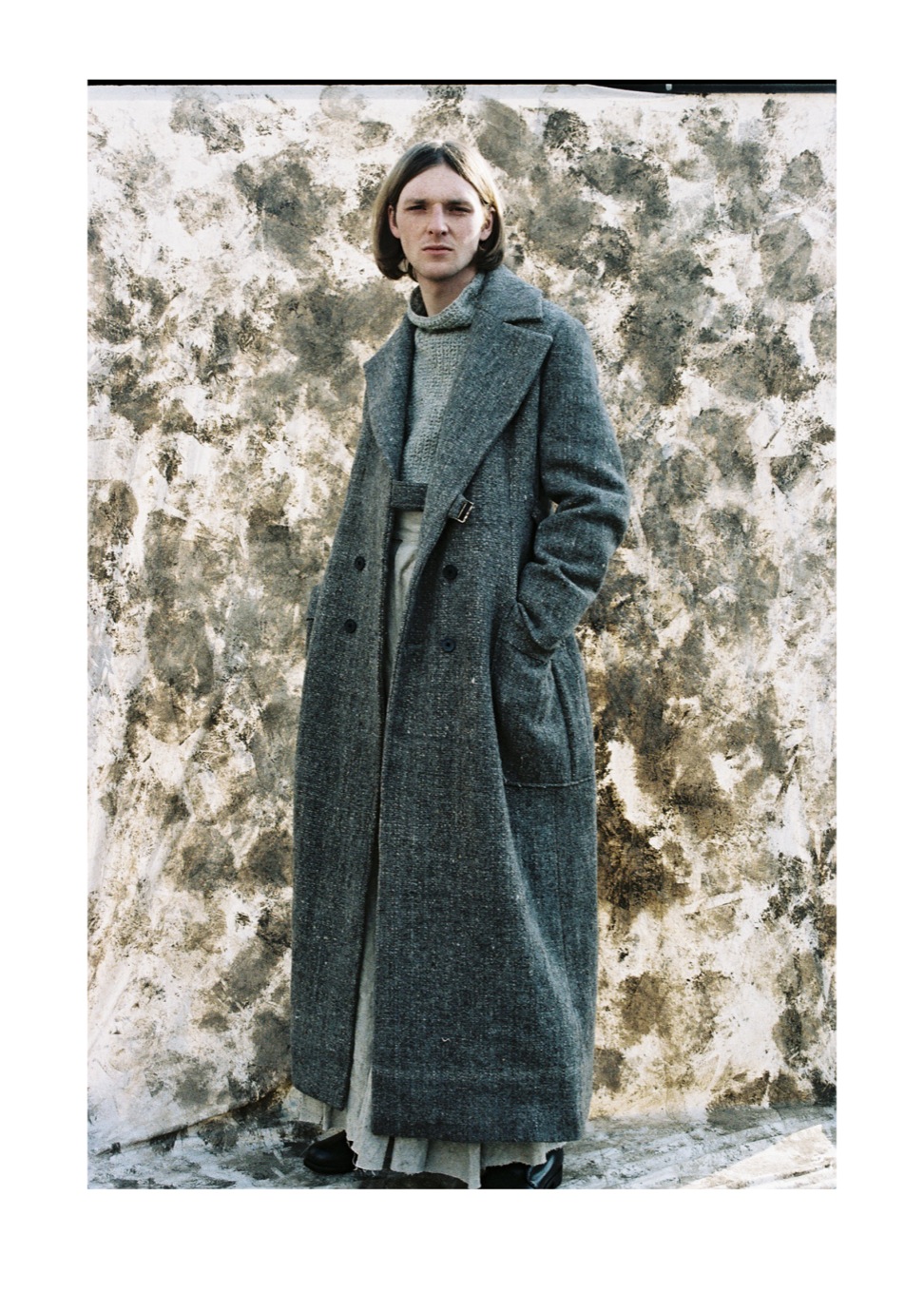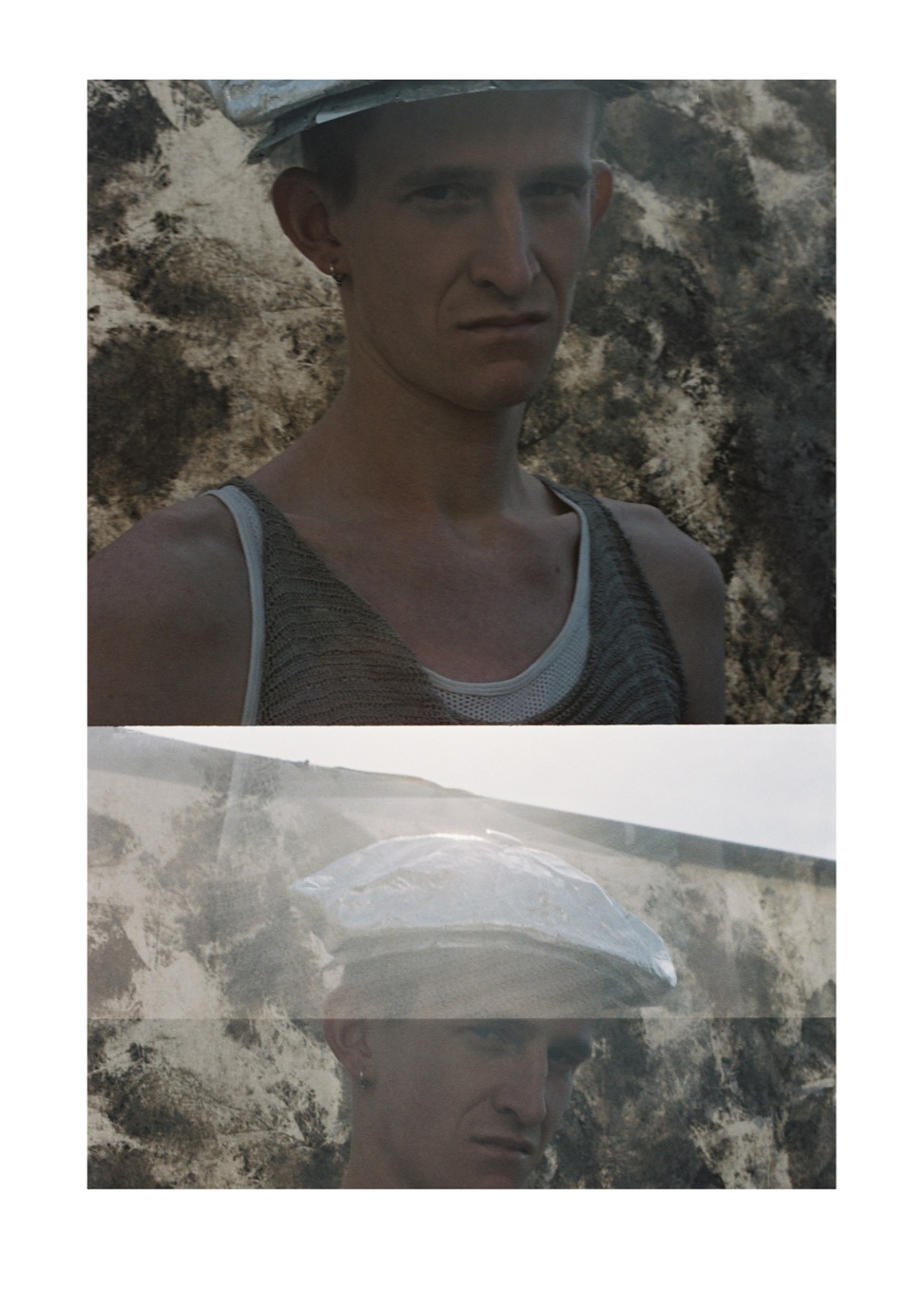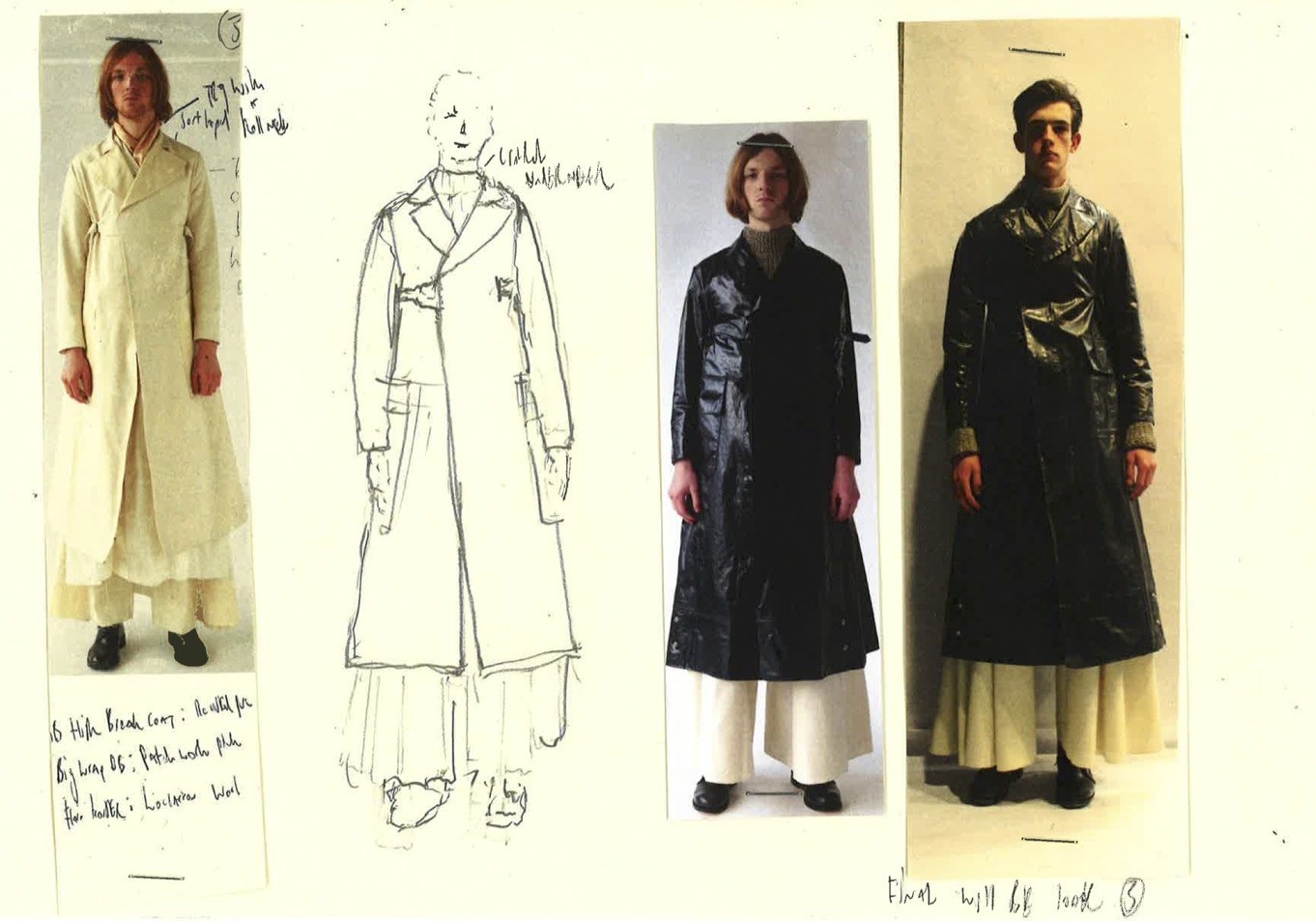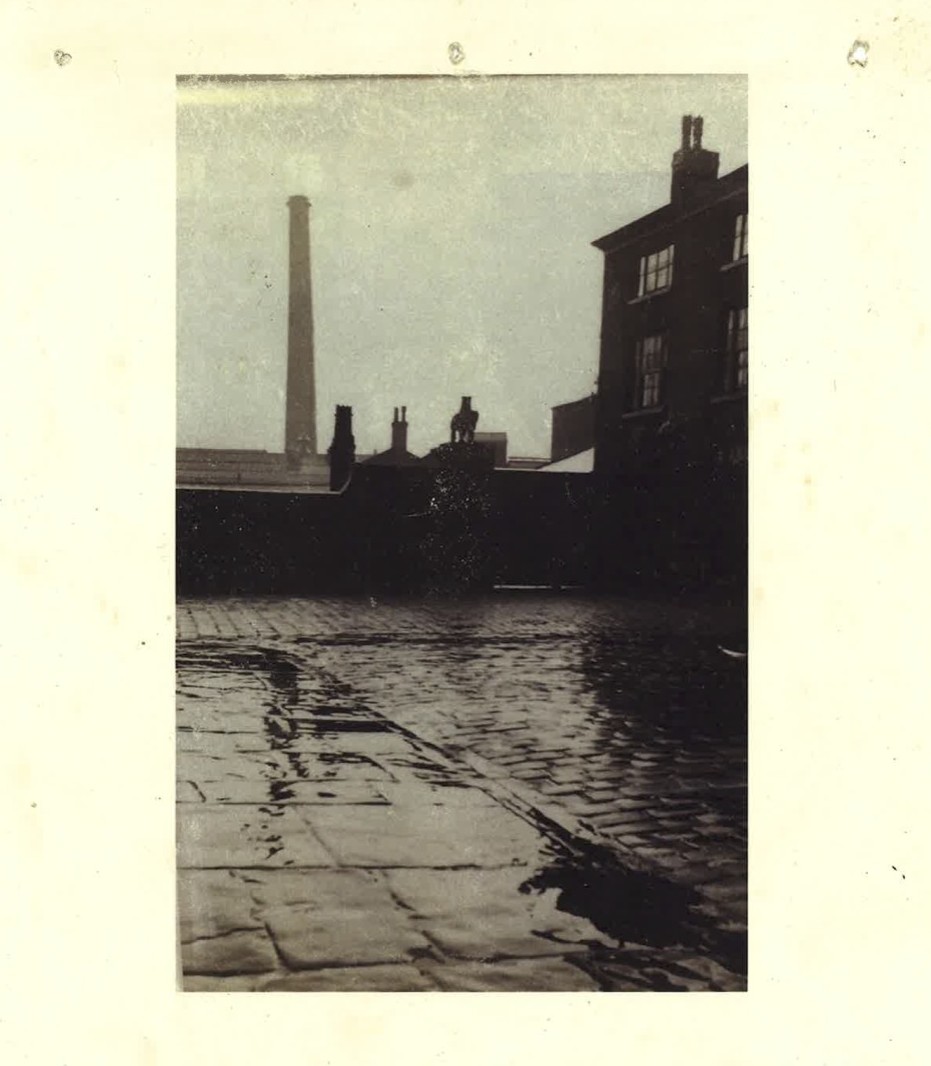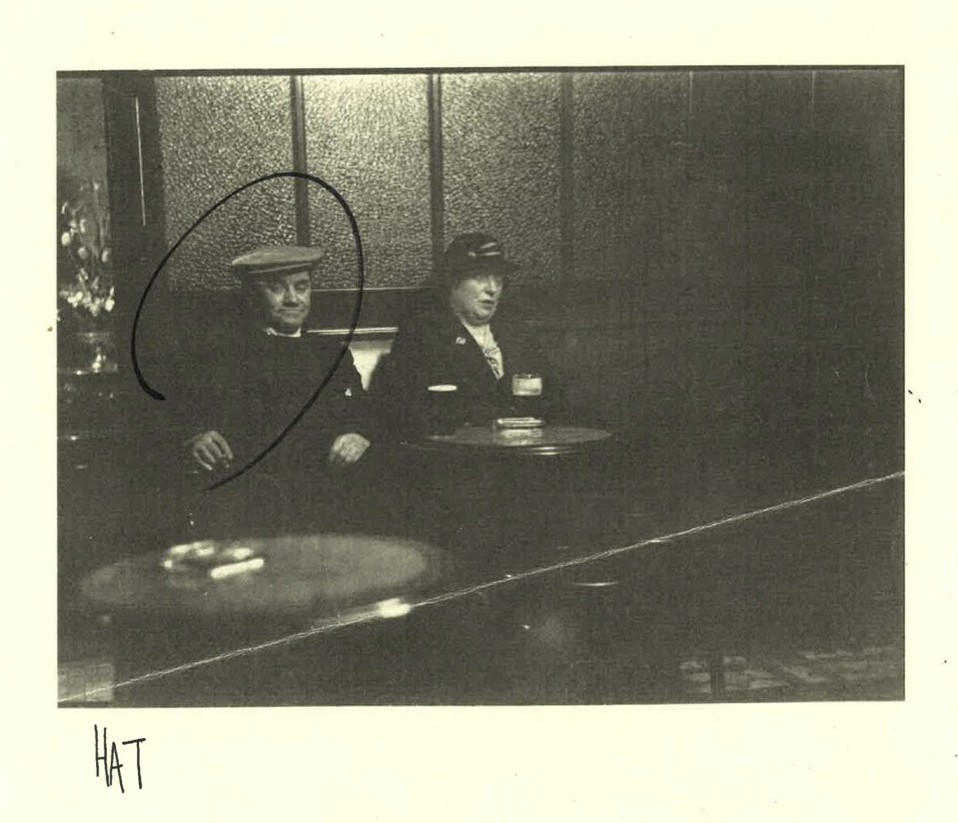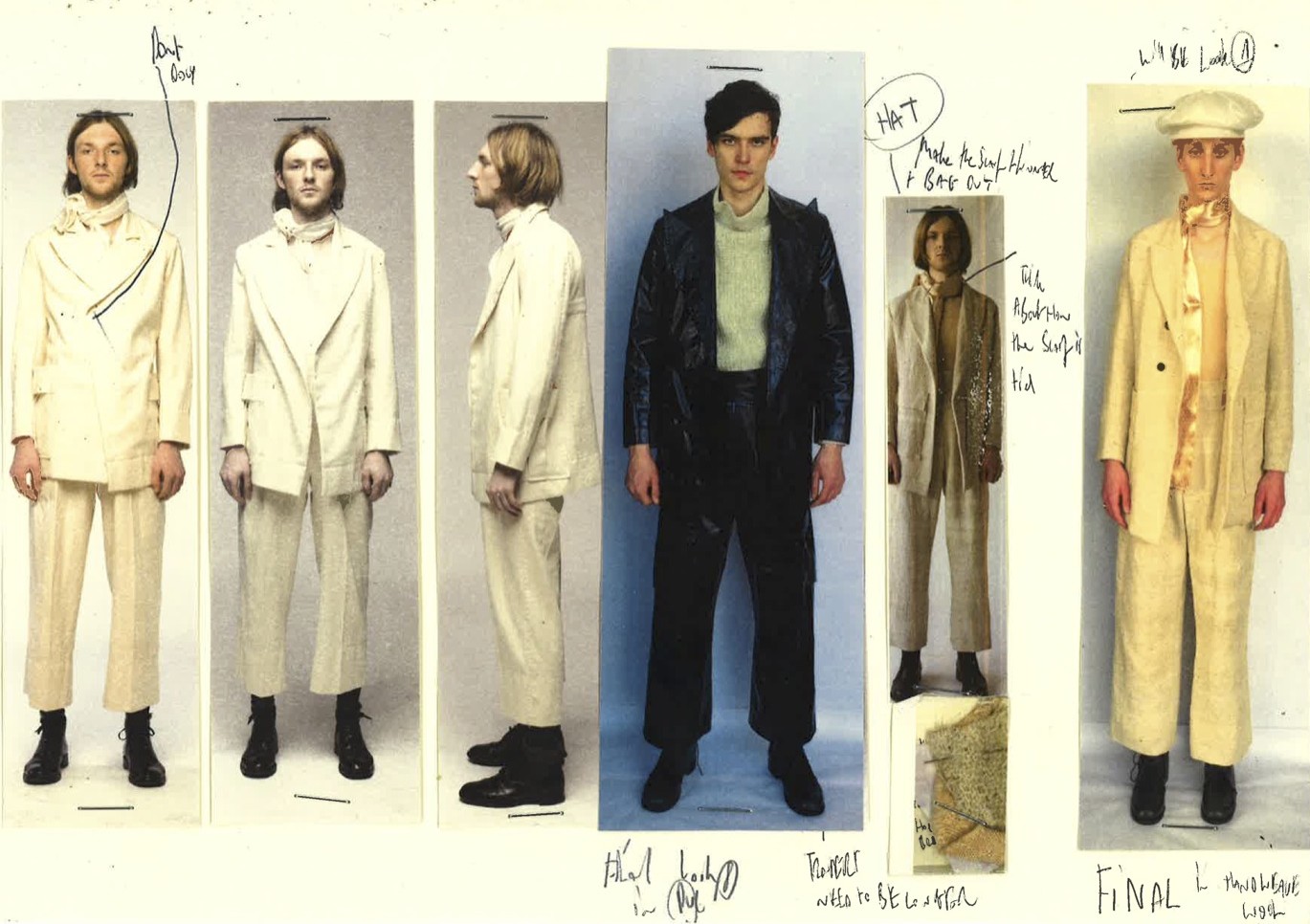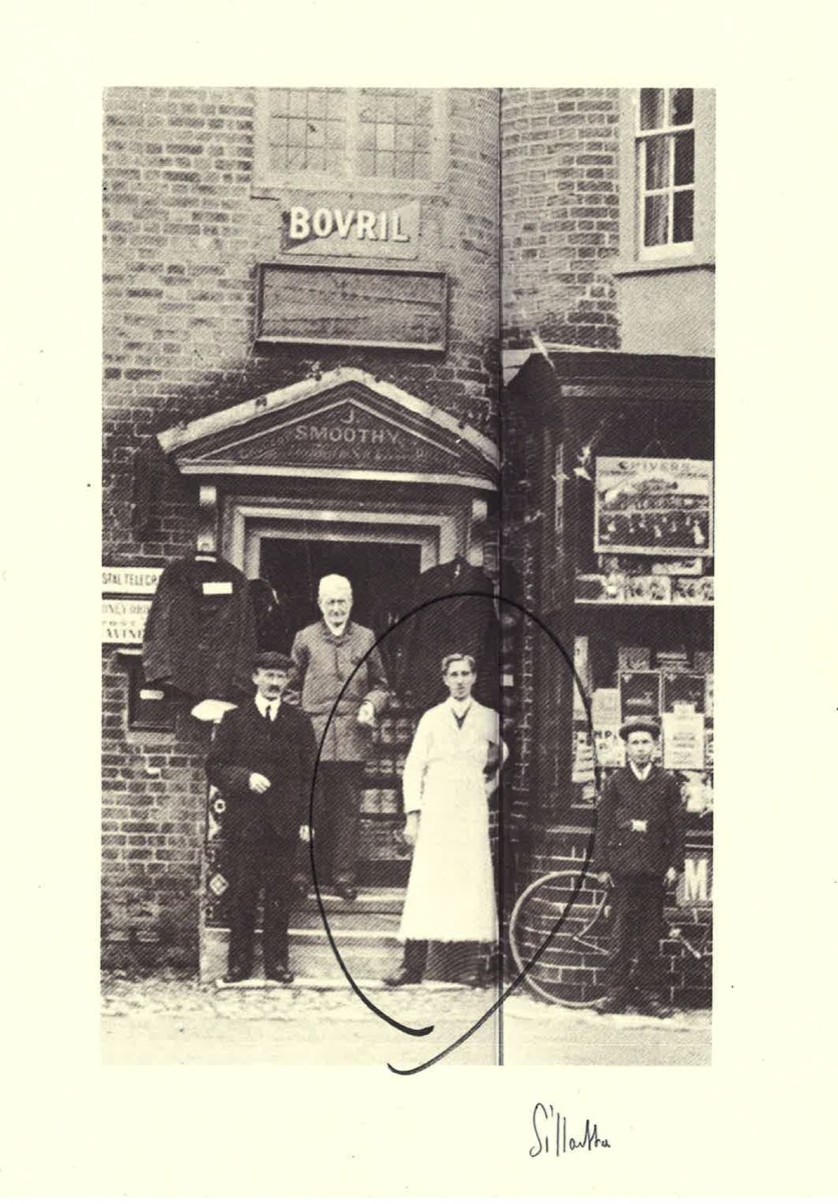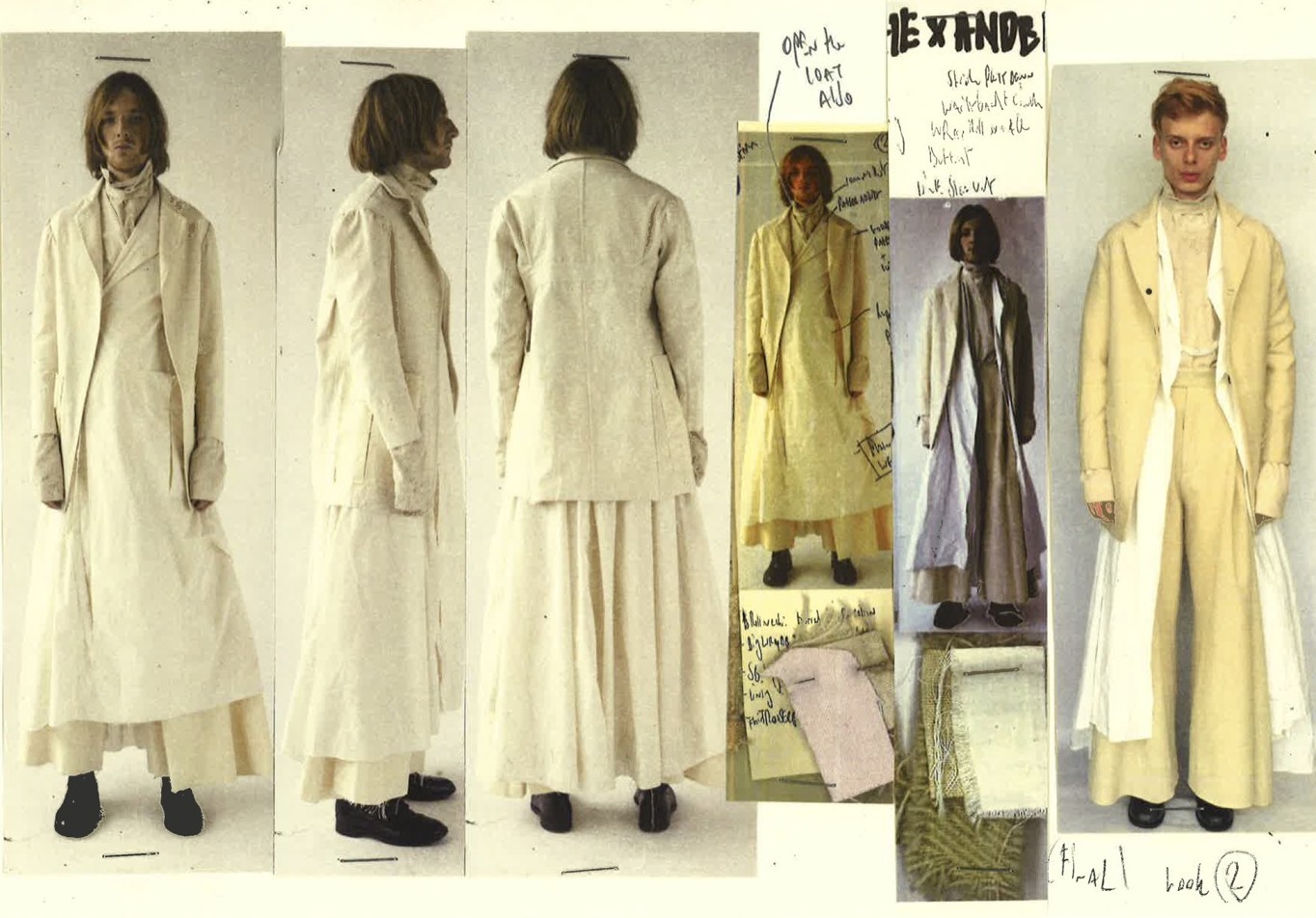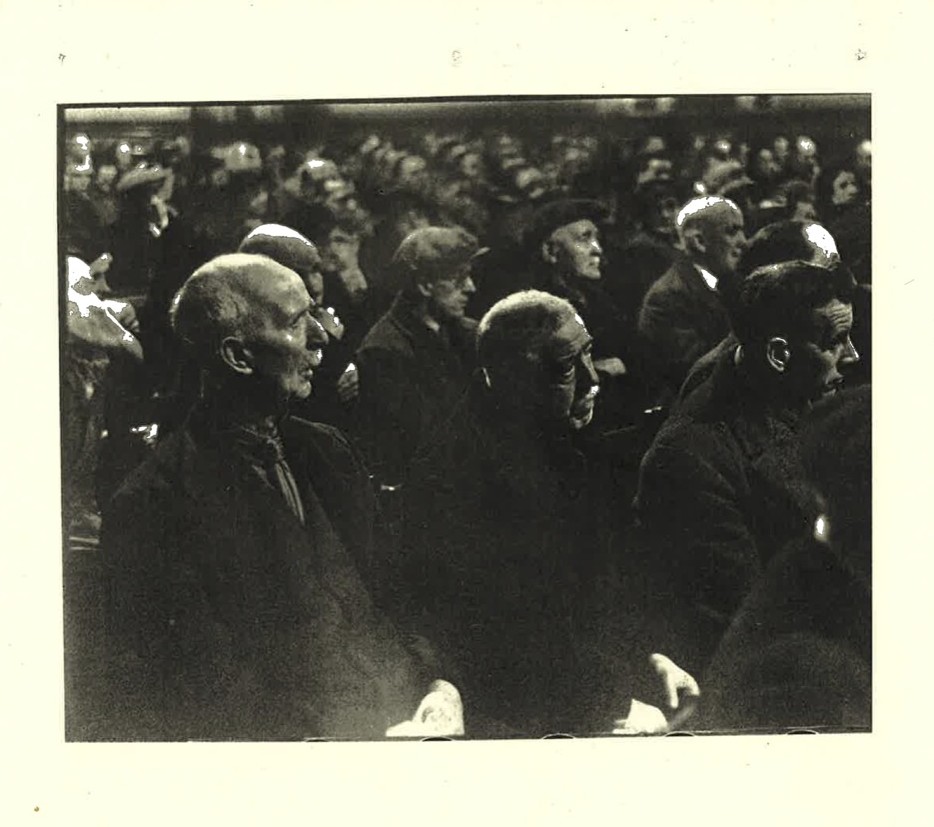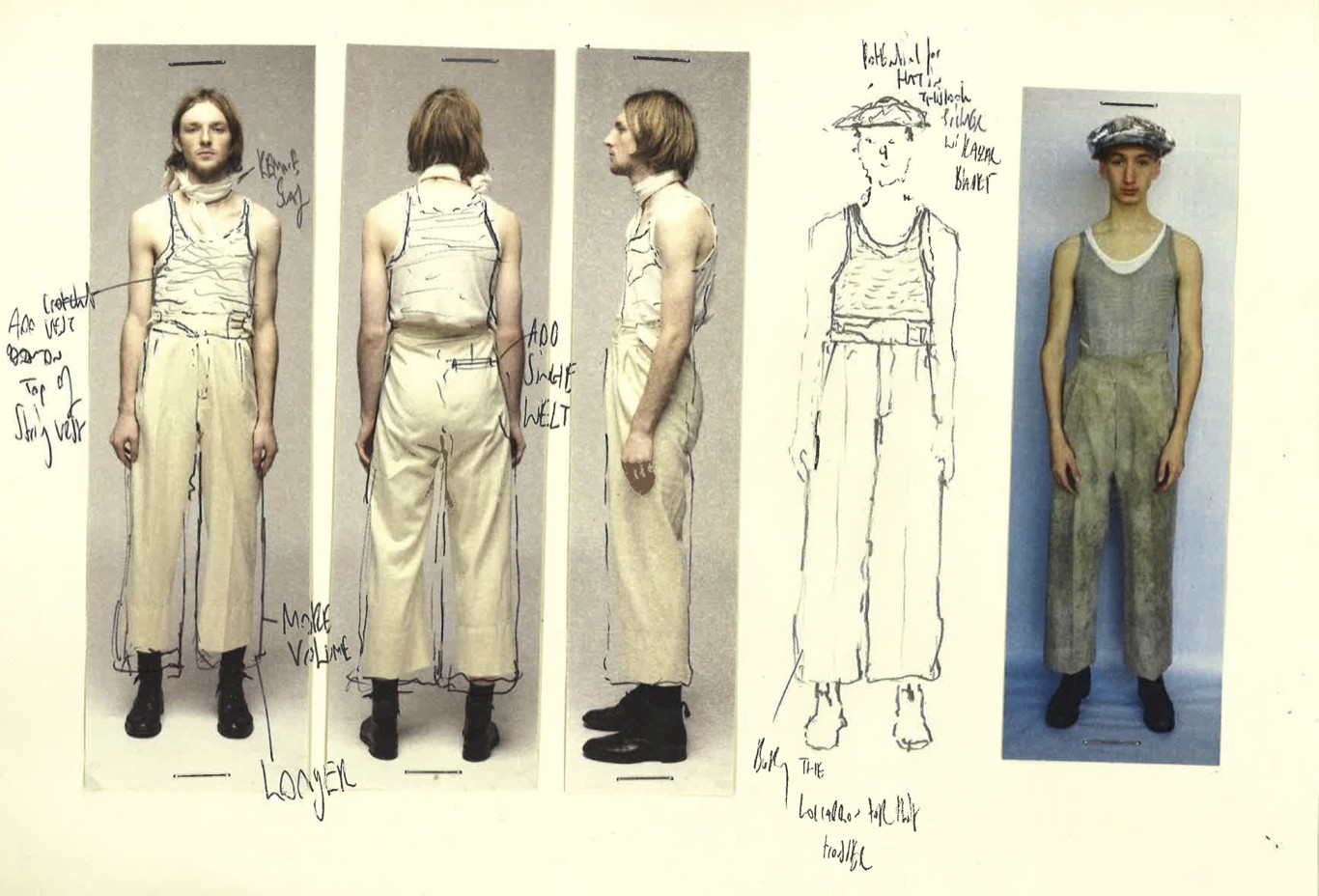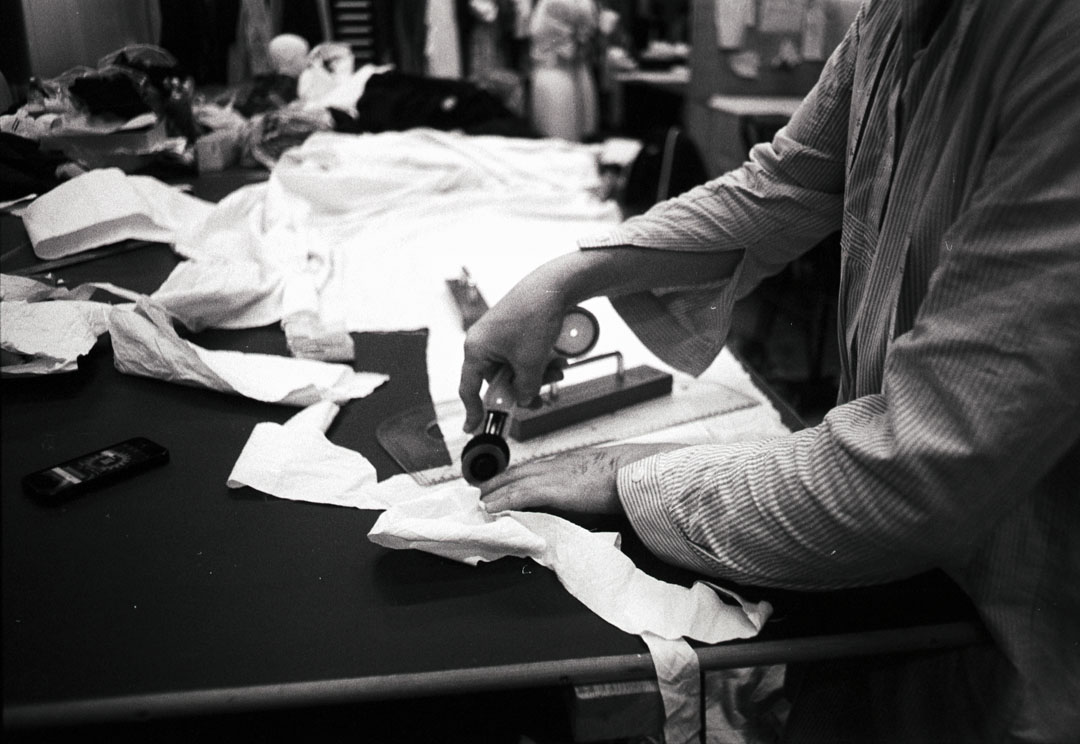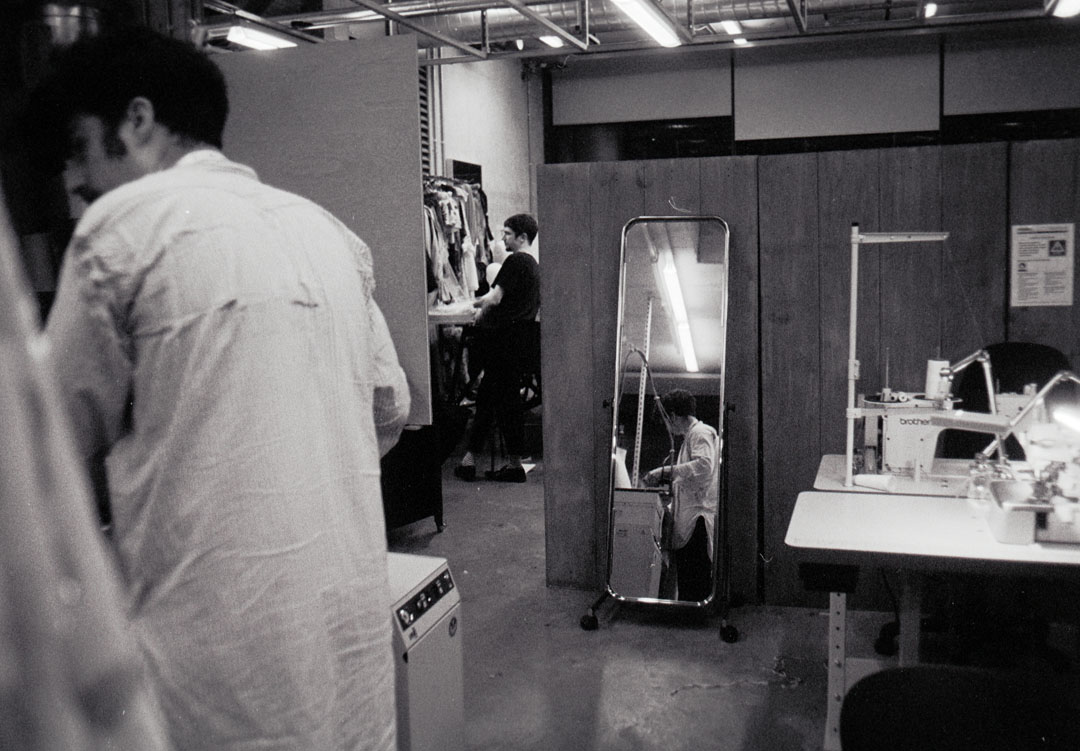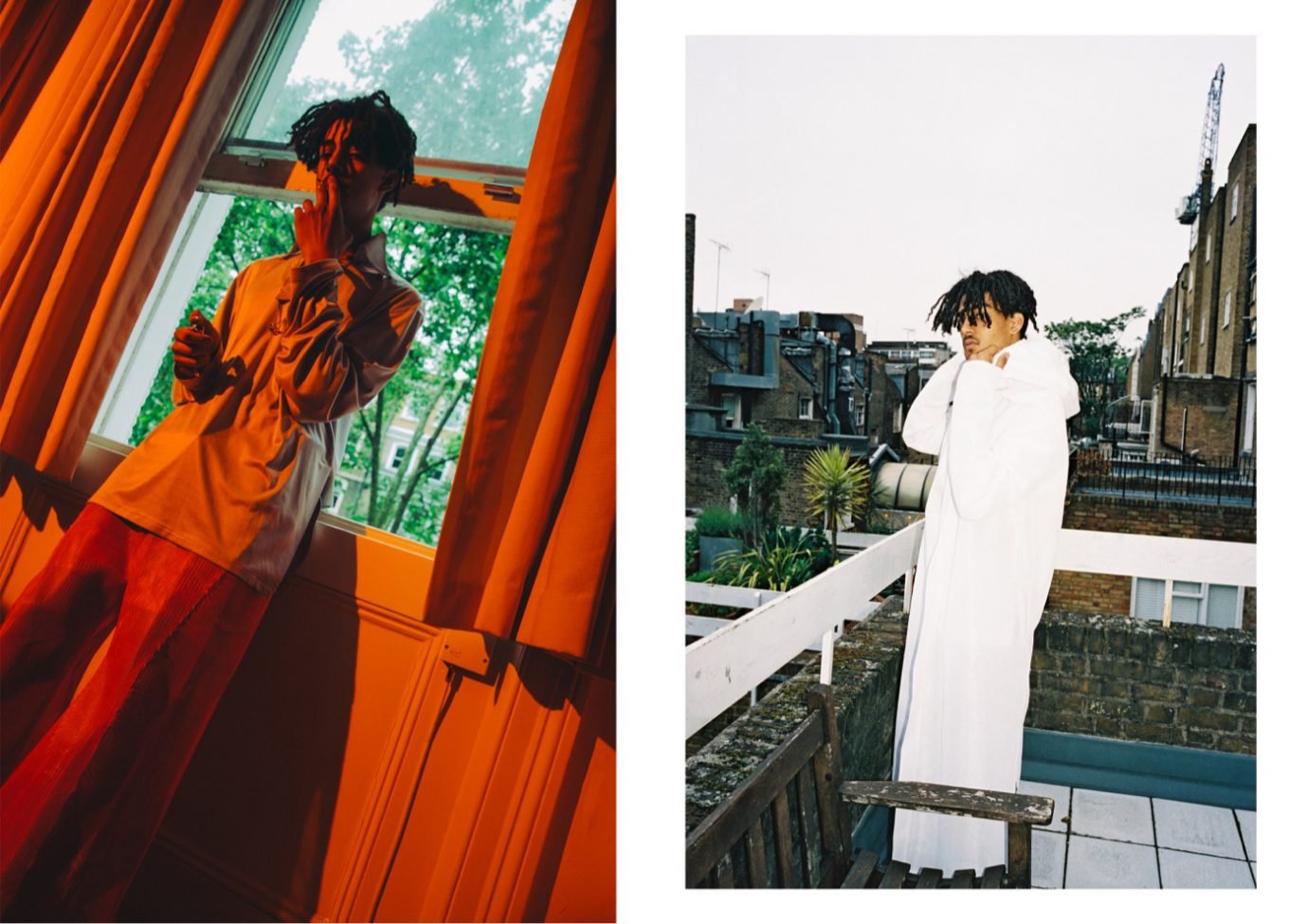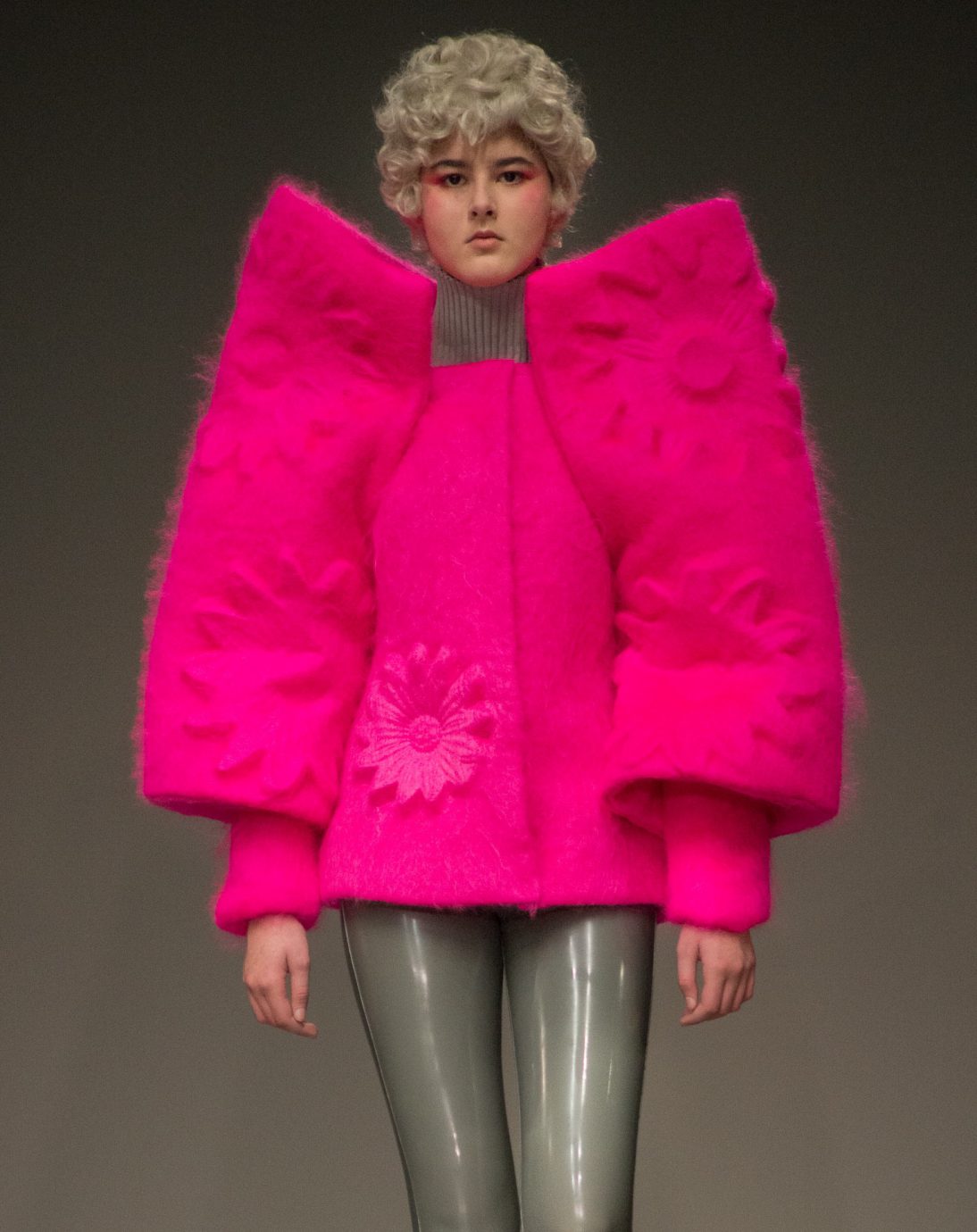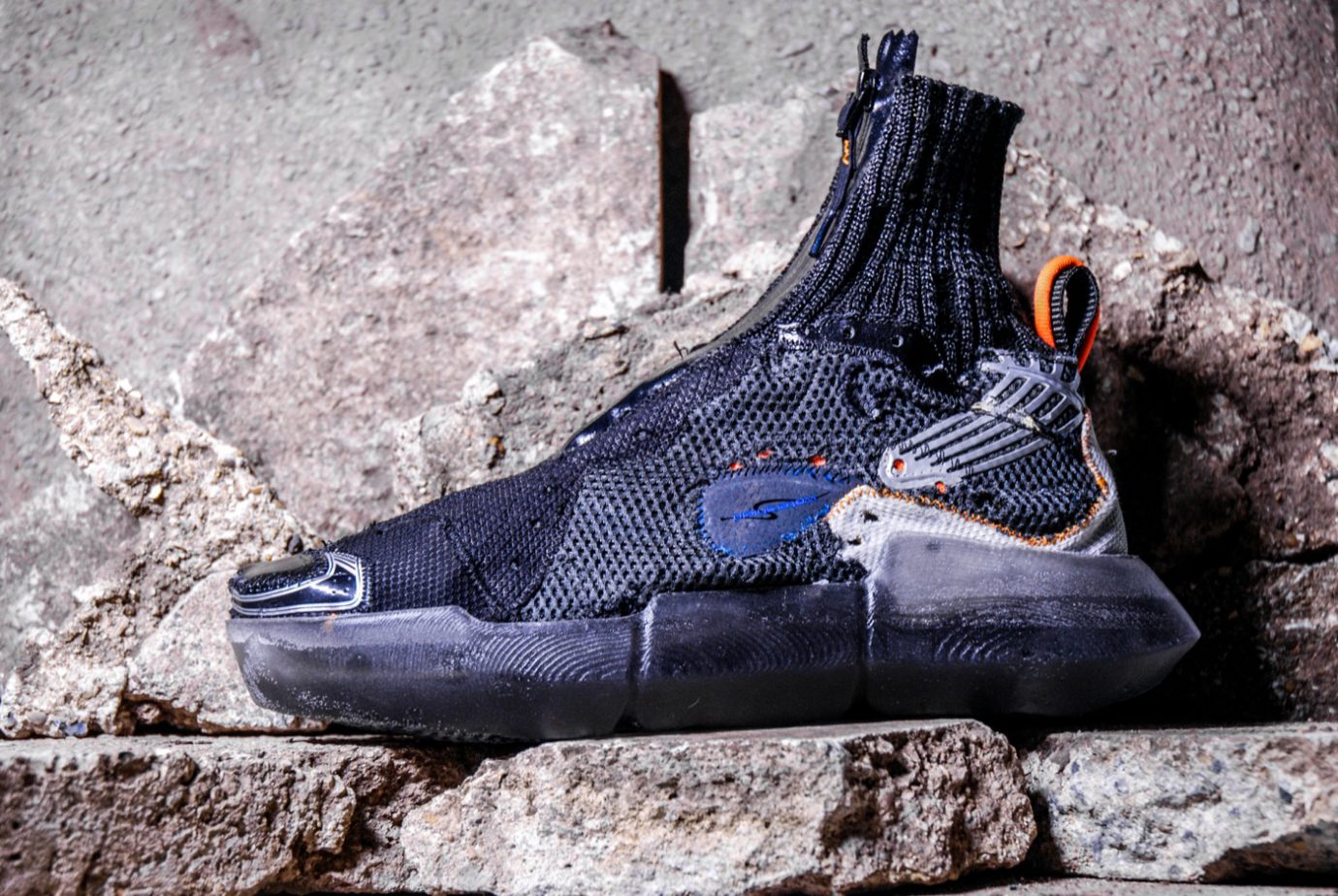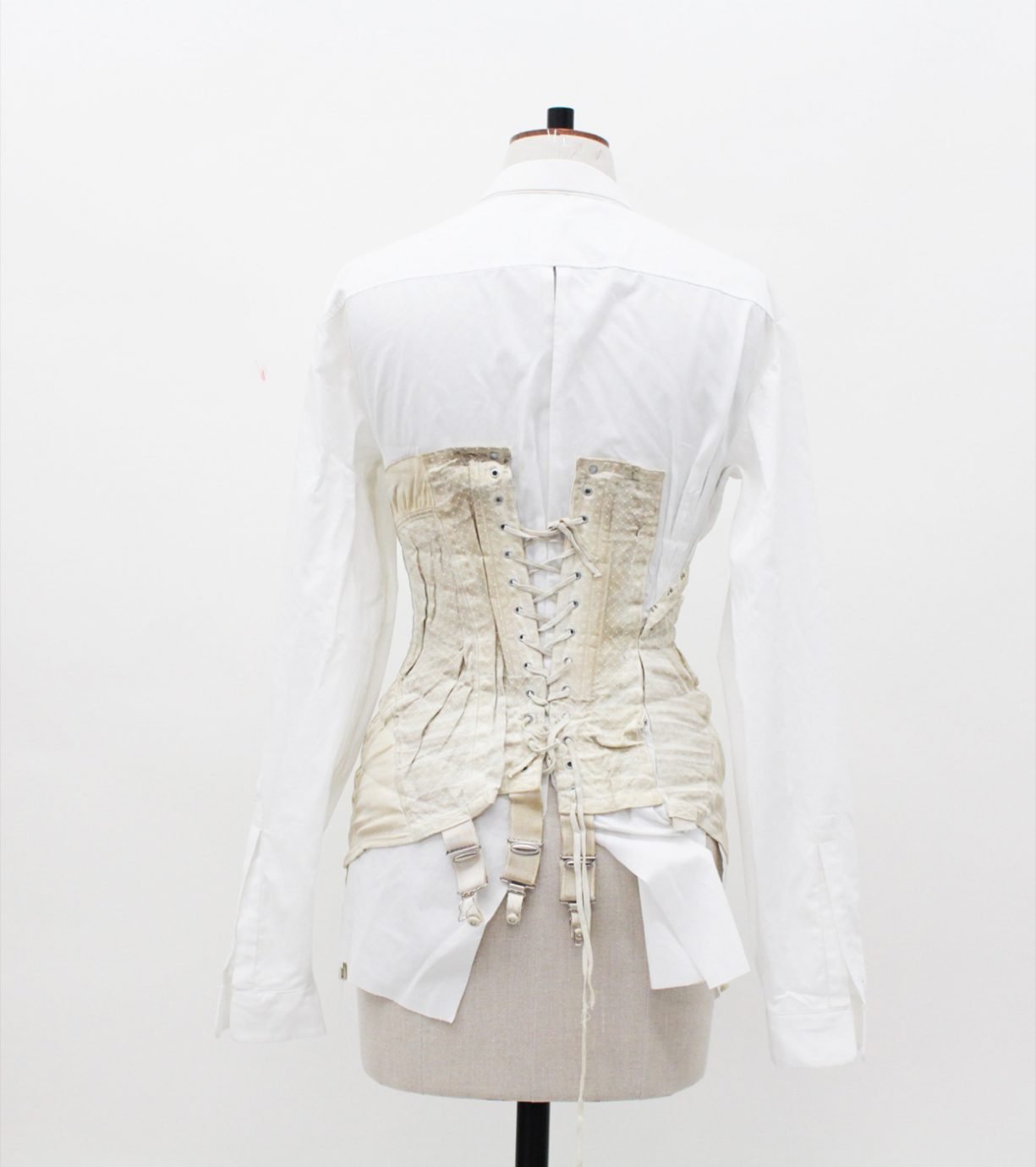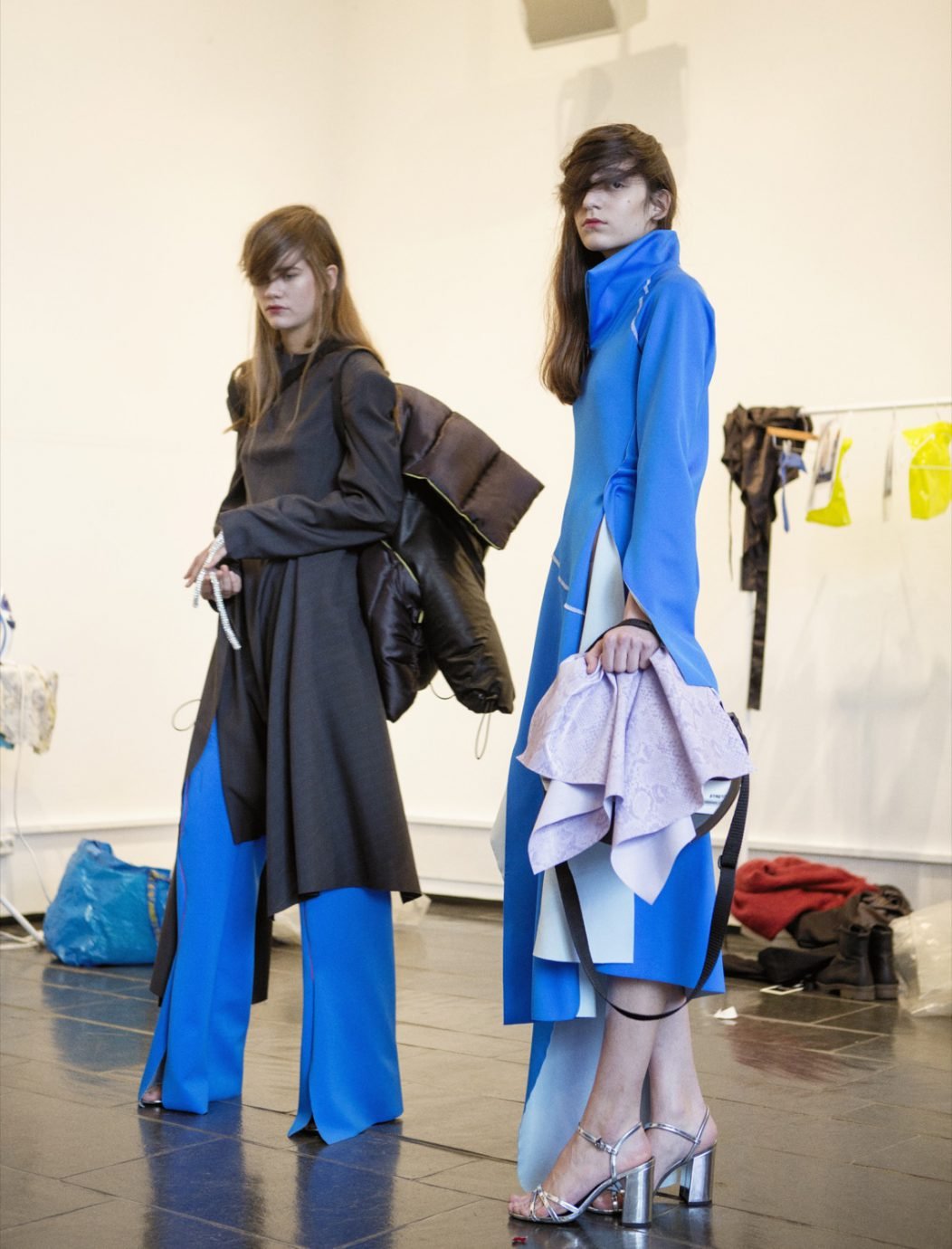John’s final collection, shot by his younger brother Ryan Neil Skelton
Models: Andrew Wyatt and Jack Appleyard, Styling by John Skelton
When I first meet John, to begin work on a documentary of his creation process, it’s the coat that grabs my attention. The flamboyant shape contrasts with the soft subdued brown wool that has been specially woven in British mills to Skelton’s specifications. His enthusiasm is infectious as he leafs through Spender’s photographs and talks animately about these sources of inspiration. Later, the importance of these visual prompts is revealed when I discover that John doesn’t usually draw out his designs before he begins working. The excitement of this first encounter belied a startling ability on John’s part to withdraw silently into his work.
A certain emphasis on control also becomes apparent. His telling reaction to being officially granted the opportunity to show at London Fashion Week is to return quietly to his desk-space and continue cutting and sewing, despite the fact that he is surrounded by his peers embracing each other through tears of joy or disappointment.
John meticulously constructs his collection around images that inspire him, some photographs from Spender, some phantom pieces he carries in his mind’s eye. This level of involvement makes him extremely attached to his clothes, injecting them with his personal sense of integrity. When the time comes to create a lookbook and take some editorial shots, he styles each look and paces, concerned, at every click of the shutter. His own emotions are usually kept in check while he focuses on the manual act of creating, an idea that obsesses him, inherited from ancestors who have always worked with their hands. “A lot of my family do, and have done, trade jobs”, he enthuses, moving his ever-restless hands a lot even as he explains this, “My grandfather was a really amazing welder and would make fine, intricate work. All my family make things, everybody has a very hands-on approach.”
He speaks extensively about sustainability, his disgust at the modern fashion industry, and endless overflowing landfills, fuelled by a culture of mass consumption, and trend-driven purchases, what he calls “nothing-clothes”. He has a collection of idealistic visions that would seem naive coming from most people, and expresses a principled desire to contribute to the creation of a better and more authentic world. Despite the lofty ideals, he speaks with an innocent conviction that makes everything he describes seem eminently possible. He wants to participate quietly in his own way, rather than to lead a revolution. His plan of action is simply to create and find beauty, to save discarded vintage materials from rubbish dumps, and work slowly on creating those timeless items of clothing. Even more than he hates trends, he hates the trend for ethical fashion, and the co-opting of the Made In England label as a nationalistic marketing gimmick.


